The Nation’s Leader in Surplus, Seconds, Salvage, Opportunity & Spot Buys
Specializing in Short-Coded, Past “Best-Use-By” Dates and Discount Products
—-———————————————————————————————-—
How the Economy Impacts Food Insecurity and What You Can Do About It
While it makes sense that there would be a direct link between the health of the nation’s economy and an individual family’s ability to put food on the table, the connection between these two factors is more circular than direct.
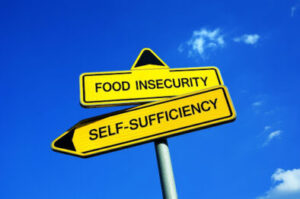
That means that [global and national] economics plays a role in food security, and the effects of food insecurity, in turn, take a toll on the economy.
Individuals and families are food insecure when they lack regular and reliable access to the food they need to lead an active and healthy life. This includes not just the amount of food someone has access to but the quality of that food, particularly in terms of food safety and nutrition.
Americans spend roughly 12% of their household budget on food each year. What happens if that budget lacks or supply cannot meet a family’s needs? Since Covid 19, and through to the present moment, we have seen a host of unique circumstances that have wreaked havoc on the global economy.
Beyond the Pandemic (whose impacts we still see and feel daily across every sector of work and life), these past years have seen a devastating and undeniable (and unavoidable) combination of issues, such as the war in Ukraine and inflation.
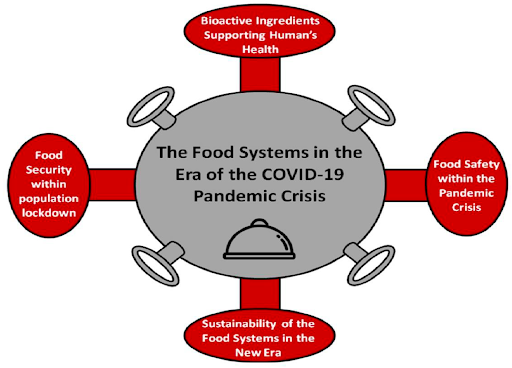
How Does Food Trade Impact the Economy?
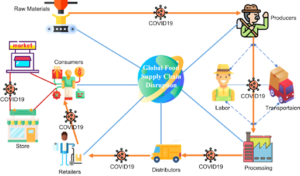 Before getting into the consequences of food insecurity on families and the economy, it helps to understand the traditional role of the global food trade in economic stabilization.
Before getting into the consequences of food insecurity on families and the economy, it helps to understand the traditional role of the global food trade in economic stabilization.
Economics, Food Insecurity, Ukraine
World food prices reached their highest level on record in 2022. Low-income countries (where families spend closer to 45% of their household budget on food) were hit the hardest, but even in the U.S., the economics of the global food trade took their toll.
Ukraine – Some Facts
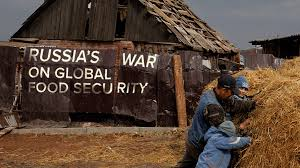 The impact of the war in Ukraine should not be underestimated when it comes to garnering even a small understanding of how this conflict halfway around the world has impacted not just U.S. consumers but the global economy.
The impact of the war in Ukraine should not be underestimated when it comes to garnering even a small understanding of how this conflict halfway around the world has impacted not just U.S. consumers but the global economy.
Ukraine mainly grows and exports wheat, corn, and barley. According to the European Commission, Ukraine accounts for 10% of the world wheat market, 15% of the corn market, and 13% of the barley market. With more than 50% of world trade, it is also the main player in the sunflower oil market. Bearing these statistics in mind, it’s no surprise then that this war would have significant repercussions beyond the country’s borders that have had a direct impact on everyday food items and goods on American supermarket shelves.
According to Reuters, data shows that Ukraine has exported 10.8 million tonnes of grain in the 2022/23 July-June season compared with 16.5 million in the same period of 2021/22. This season’s volume includes 3.99 million tonnes of wheat, 5.88 million tonnes of corn, and 896,000 tonnes of barley.
Related Social Impacts Beyond Food Costs
There is a high annual cost to food insecurity beyond the high price of food that impacts people and families. In the U.S., that includes:
- Healthcare costs related to insufficient nutrition
- Lower lifetime earning potential for individuals dealing with food insecurity
- Higher spending on food assistance programs
Ultimately, food insecurity has a cost for every person in the country, even if they’re not the ones going hungry.
The Consequences of Food Insecurity
And then there are consequences of hunger as they relate to general well-being. Without affordable access to food, for example, in times of significant inflation that Americans are currently experiencing, individuals rely more heavily on state- and federally-funded income support and food programs to meet their needs. The Farmers to Families Food Box Program in 2020 and 2021 (of which Marvell Foods played a significant role in the U.S. by making a surplus food donation of more than ten million pounds of food). On the one hand, these programs provide food assistance; on the other hand, there is, however, a related cost in terms of the emotional, mental, and physical stress on struggling families, as they seek food assistance.
Meeting Nutritional Needs
There is also the matter of meeting recommended nutritional requirements without the ability to buy what you need. Individuals who can successfully utilize federal programs like the Supplemental Nutrition Assistance Program (SNAP) are limited in what and how much food they can buy. At a household level, this can mean that even when there is food in the cupboards, it is not the type that is necessary for sustaining optimal health. Instead, those with limited funds to spend on food tend to focus on high-calorie, filling foods instead of foods that are more nutritionally dense but not as filling.
There is also the social impact of food insecurity. Poorly nourished children and adults face social consequences ranging from lost productivity in school or the workplace to a stigma among their peers. They also risk falling behind on social measures like career achievements and lifetime earnings.
While Americans are lucky to have government and community support programs in the U.S. that help meets the needs of families facing food insecurity, consequences still exist on a personal and financial level. It’s essential to acknowledge these myriad issues when addressing the cyclical nature of economics and food security.
The economy impacts food insecurity in many ways that aren’t always immediately obvious to the everyday person. Taking heed of these connections (both the direct impacts and the cyclical ones) provides greater insight into the economy of the food trade on more than just an economic level, but the practicalities of such issues on a human level. And in turn, this greater understanding might allow us as a society to do a better job of increasing access to food, regardless of our role in the supply chain.
Marvell Foods & You: How We and You Help Food Insecure Americans
Bearing all the above in mind, the question becomes, how can we – people and companies in the Food Business – help address Food Insecurity in the country?
As one of the nation’s leading food brokers, traders, and food buyers, we work with scores of companies large and small, from manufacturers, processors, suppliers, distributors, retailers, food banks, and a host of other entities to assist with short dated, short-coded food by finding secondary outlets (BUYERS) for food products that are expiring soon or that have expired.
If you are in the food business in one way or another, how can this help you and your business while at the same time helping Food Insecure American Families?
- Earn revenue on slow-moving or “no-moving” food inventory.
- Make room for newer (food) products.
- Eliminate costly food storage (freezer) costs.
Working with Marvell Foods allows you to meet critical social justice needs while simultaneously adding to your company’s bottom line. That’s not just good for business, it’s good for people and your community.
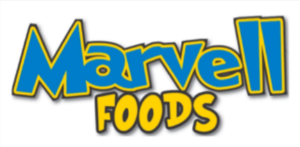
For more information on surplus food buying, visit https://www.marvellfoods.com/

